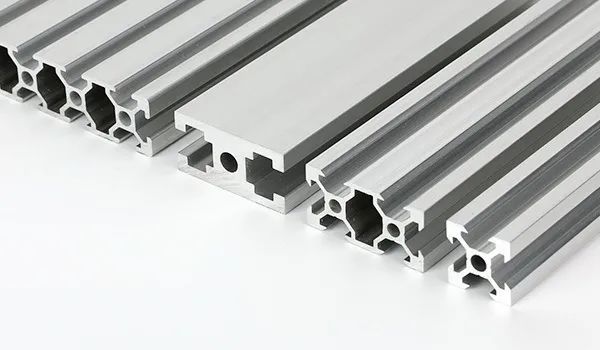Five ways to identify the quality of aluminum profiles
Release time:
2014-12-25
1. Identification inspection: whether the aluminum profile and packaging are marked with product standard code and production license number, etc. 2. Surface quality: In addition to cleaning the surface of aluminum profiles, defects such as cracks, peeling, corrosion and bubbles are not allowed, and defects such as corrosion spots, electric burns, black spots, and oxide film shedding are not allowed. 3. Oxide film thickness: The oxide film of aluminum profile is formed in anodic oxidation, which has protective and decorative functions and can be detected by eddy current thickness gauge. 4. Sealing quality: There are many gaps on the surface of the aluminum profile after anodizing. If it is not closed or closed, the corrosion resistance of the aluminum profile will be reduced. The commonly used methods of sealing quality inspection are acid leaching method, admittance method and phosphoric acid method. Acid leaching method is generally used in on-site inspection. The surface of the aluminum profile is scrubbed with acetone to remove oil and dust. The nitric acid with a volume ratio of 50% is dropped on the surface and gently scrubbed. After 1 minute, the nitric acid is washed off with water, and then dried. Drop a drop of medicinal gentian onto the surface. After 1 minute, wipe off the gentian and thoroughly clean the surface, carefully observing the traces left. The aluminum profile with poor sealing will leave obvious traces, and the heavier the traces, the worse the sealing quality. Corrosion resistance: This indicator mainly affects the life of aluminum profiles. Corrosion resistance inspection has copper accelerated acetic acid salt spray test and alkali drop test. Here, the alkali drop test is introduced, that is, at 35 ℃ ± 1 ℃, about 10mg, 100g/L NaOH solution is dropped onto the surface of the aluminum profile, the droplet is visually observed until corrosion bubbling occurs, and the time when the oxide film is penetrated is calculated. This test is easy to judge rough steps outdoors in summer. In order to ensure the accuracy of the test, it must be carried out under the strict conditions of the laboratory.
1. Identification inspection: whether the aluminum profile and packaging are marked with product standard code and production license number, etc.
2, surface quality: in addition to the aluminum surface should be clean, not allowed to have cracks, peeling, corrosion and bubbles and other defects, but also not allowed to have corrosion spots, electric burns, black spots, oxide film off and other defects.
3. Oxide film thickness: The oxide film of aluminum profile is formed in anodic oxidation, which has protective and decorative functions and can be detected by eddy current thickness gauge.
4. Sealing quality: There are many gaps on the surface of the aluminum profile after anodizing. If it is not closed or the sealing is not good, the corrosion resistance of the aluminum profile will be reduced. The commonly used methods of sealing quality inspection are acid leaching method, admittance method and phosphoric acid method. Acid leaching method is generally used in on-site inspection. The surface of the aluminum profile is scrubbed with acetone to remove oil and dust. The nitric acid with a volume ratio of 50% is dropped on the surface and gently scrubbed. After 1 minute, the nitric acid is washed off with water, and then dried. Drop a drop of medicinal gentian onto the surface. After 1 minute, wipe off the gentian and thoroughly clean the surface, carefully observing the traces left. The aluminum profile with poor sealing will leave obvious traces, and the heavier the traces, the worse the sealing quality. Corrosion resistance: This indicator mainly affects the life of aluminum profiles. Corrosion resistance inspection has copper accelerated acetic acid salt spray test and alkali drop test. Here, the alkali drop test is introduced, that is, at 35 ℃ ± 1 ℃, about 10mg, 100g/L NaOH solution is dropped onto the surface of the aluminum profile, the droplet is visually observed until corrosion bubbling occurs, and the time when the oxide film is penetrated is calculated. This test is easy to judge rough steps outdoors in summer. In order to ensure the accuracy of the test, it must be carried out under the strict conditions of the laboratory.
Contact Information
Customer Service Tel: +86-539-7177878
Mailbox: kemet@sdkemet.com
Zip Code: 273400
Address: Linyi City, Shandong Province
Copyright©2023 Kemet New Materials Technology Co., Ltd. All Rights Reserved





